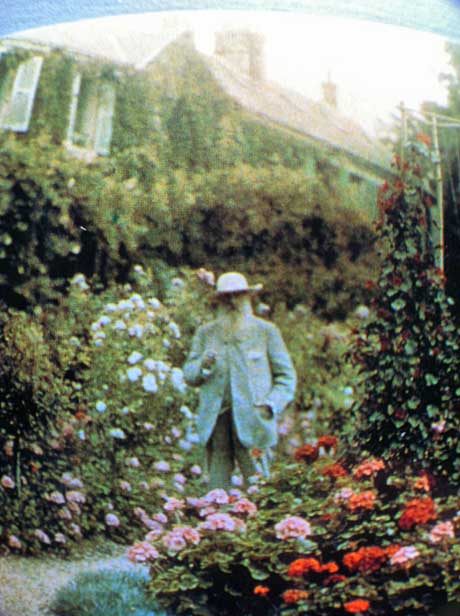impressionist-ART.com
Impressionism & Post-Impressionism
Claude Monet 1840–1926
Claude Monet was a key figure in the Impressionist movement that transformed French painting in the second half of the nineteenth century. Throughout his long career, Monet consistently depicted the landscape and leisure activities of Paris and its environs as well as the Normandy coast. He led the way to twentieth-century modernism by developing a unique style that strove to capture on canvas the very act of perceiving nature.

Monet in his Garden,
Giverny
Raised in Normandy, Monet was introduced to plein-air painting by Eugène Boudin (2003.20.2), known for paintings of the resorts that dotted the region's Channel coast, and subsequently studied informally with the Dutch landscapist Johan Jongkind (1819–1891). When he was twenty-two, Monet joined the Paris studio of the academic history painter Charles Gleyre. His classmates included Auguste Renoir, Frédéric Bazille, and other future Impressionists. Monet enjoyed limited success in these early years, with a handful of landscapes, seascapes, and portraits accepted for exhibition at the annual Salons of the 1860s. Yet many of the rejection of his more ambitious works, notably the large-scale Women in the Garden (1866; Musée d'Orsay, Paris), inspired Monet to join with Edgar Degas, Édouard Manet, Camille Pissarro, Renoir, and others in establishing an independent exhibition in 1874. Impression: Sunrise (1873; Musée Marmottan Monet, Paris), one of Monet's contributions to this exhibition, drew particular scorn for the unfinished appearance of its loose handling and indistinct forms. Yet the artists saw the criticism as a badge of honor, and subsequently called themselves "Impressionists" after the painting's title, even though the name was first used derisively.
